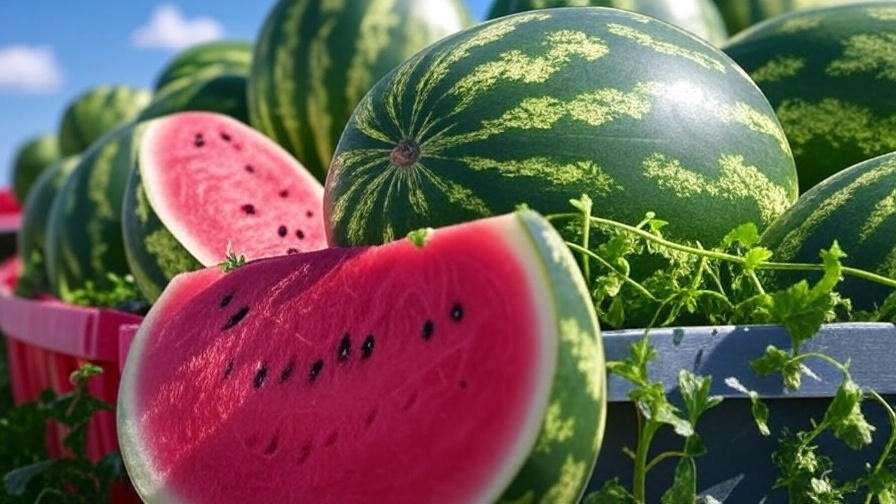Imagine biting into a sweet, juicy watermelon you grew yourself, right in the heart of Laredo’s scorching summer. With watermelon bins in Laredo, this dream is within reach, even if you’re short on space or dealing with challenging soil. Container gardening is transforming how Laredo residents grow fresh produce, offering a practical solution for small yards, patios, or urban balconies. In this comprehensive guide, we’ll walk you through every step to successfully grow watermelons in bins, tailored to Laredo’s unique semi-arid climate. Drawing on insights from local horticulturists and years of experience in South Texas gardening, this article equips you with expert tips to overcome heat, poor soil, and limited space, ensuring a bountiful harvest of delicious watermelons.
Why Grow Watermelons in Bins in Laredo?
Benefits of Container Gardening for Watermelons
Growing watermelons in bins is a game-changer for Laredo gardeners. Unlike traditional in-ground gardening, bins offer unmatched flexibility. They’re perfect for small spaces—whether you have a tiny backyard, a sunny patio, or a balcony in downtown Laredo. Containers allow precise control over soil quality, which is critical in a region where native soils are often alkaline and clay-heavy, making them less than ideal for watermelons. Bins also simplify pest and weed management, reducing the need for chemical interventions. Plus, they’re portable, so you can move them to optimize sunlight or shield plants from Laredo’s occasional windstorms.
Laredo’s Climate and Its Impact on Watermelon Growth
Laredo’s climate, classified as USDA Zone 9a, is hot and semi-arid, with average summer temperatures soaring above 90°F and minimal rainfall. Watermelons, which thrive in warm conditions, are well-suited to this environment, but challenges like intense heat, low humidity, and poor soil drainage can hinder growth. Containers mitigate these issues by allowing you to customize soil, manage water effectively, and protect plants from extreme weather. According to Dr. Maria Gonzalez, a South Texas agronomist with Texas A&M AgriLife Extension, “Container gardening empowers Laredo residents to grow crops like watermelons with greater success by overcoming environmental limitations.”
Choosing the Right Watermelon Varieties for Bin Gardening
Best Watermelon Varieties for Containers
Not all watermelons are suited for container gardening. Compact varieties with shorter vines and smaller fruits are ideal for bins. Here are three top picks for Laredo gardeners:
- Sugar Baby: A classic choice, producing 8-10 pound fruits in 75-80 days. Its compact vines (6-8 feet) fit well in bins, and it thrives in Laredo’s heat.
- Golden Midget: Known for its early harvest (70 days) and small, 3-5 pound fruits with golden rinds, perfect for limited spaces.
- Bush Charleston Gray: A bush-type variety with 10-12 pound fruits, designed for small gardens and heat tolerance.
These varieties are available at local nurseries like Laredo Garden Center or online seed retailers such as Burpee.
Hybrid vs. Heirloom Watermelons
Hybrids offer disease resistance and uniform growth, making them beginner-friendly, while heirlooms provide superior flavor and seed-saving opportunities. For Laredo’s hot, dry conditions, hybrids like ‘Crimson Sweet’ are reliable for their drought tolerance, while heirlooms like ‘Moon and Stars’ appeal to flavor enthusiasts. Choose based on your experience level and goals—hybrids for ease, heirlooms for heritage.
| Variety | Fruit Size | Days to Harvest | Flavor Notes |
| Sugar Baby | 8-10 lbs | 75-80 days | Sweet, crisp |
| Golden Midget | 3-5 lbs | 70 days | Mildly sweet, juicy |
| Bush Charleston Gray | 10-12 lbs | 85 days | Rich, traditional |
Setting Up Your Watermelon Bins in Laredo
Selecting the Perfect Bin
The right bin is the foundation of successful container gardening. For watermelons, choose a bin with a minimum capacity of 15-20 gallons to accommodate their extensive root systems. Plastic bins are affordable and lightweight, while fabric grow bags promote air pruning for healthier roots. Wooden bins, though heavier, offer durability and a rustic aesthetic. Ensure your bin has drainage holes to prevent root rot, especially in Laredo’s humid summers. Local stores like Home Depot or Walmart in Laredo stock suitable containers.
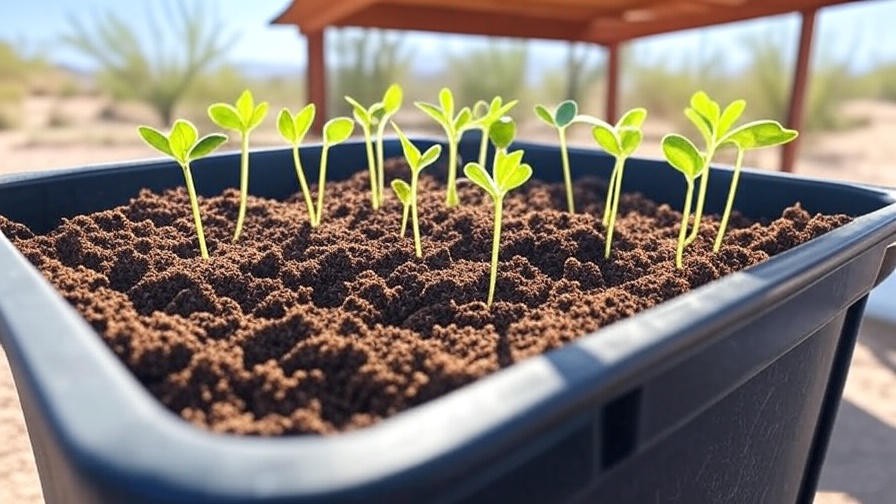
Soil Mix for Optimal Watermelon Growth
Watermelons thrive in well-draining, nutrient-rich soil with a pH of 6.0-6.8. Laredo’s native soils are often too alkaline, so create a custom mix: 40% compost, 30% peat moss, and 30% perlite or vermiculite. Add a handful of crushed eggshells to adjust pH if needed. Test your soil with kits available at Laredo’s Tractor Supply Co. or through Texas A&M AgriLife Extension’s soil testing services. This mix ensures proper drainage and nutrient retention, critical for container-grown watermelons.
Choosing the Right Location
Watermelons need 6-8 hours of direct sunlight daily, but Laredo’s intense afternoon sun can stress plants. Position bins in a spot with morning sun and partial afternoon shade, such as under a pergola or near a tall fence. Protect bins from Laredo’s gusty winds by placing them against a wall or securing them with stakes. A south-facing patio or balcony is ideal for urban gardeners.
Checklist for Setting Up a Watermelon Bin:
- Choose a 15-20 gallon bin with drainage holes.
- Fill with a compost-peat-perlite mix, ensuring pH is 6.0-6.8.
- Place in a sunny, wind-protected location with partial afternoon shade.
Planting and Caring for Watermelons in Bins
Planting Seeds or Seedlings
In Laredo, plant watermelons in early spring (March-April) to avoid peak summer heat. Sow seeds 1 inch deep, placing 2-3 seeds per bin and thinning to the strongest seedling after germination. If using nursery seedlings, transplant carefully to avoid root disturbance. Seeds are more cost-effective and widely available at Laredo’s nurseries, while seedlings offer a head start for beginners.
Watering Requirements
Watermelons need consistent moisture, but overwatering can lead to root rot in bins. Water deeply once or twice weekly, ensuring the top 2 inches of soil dry out between sessions. In Laredo’s dry climate, check soil moisture daily during heatwaves. Signs of overwatering include yellowing leaves, while underwatering causes wilting. Consider drip irrigation systems, available at Laredo’s Ace Hardware, for consistent watering.
Fertilizing for Healthy Growth
Use a balanced 10-10-10 fertilizer every 2-3 weeks during the growing season. Organic options like fish emulsion or compost tea, available at Laredo Garden Center, work well too. Start with a nitrogen-heavy fertilizer for seedlings, then switch to a phosphorus-rich formula during flowering and fruiting. Over-fertilizing can lead to lush vines but small fruits, so follow package instructions. “Container watermelons need precise nutrient management to balance vine and fruit growth,” says Dr. John Smith, a Texas A&M AgriLife Extension specialist.
Supporting Watermelon Vines and Fruits in Bins
Trellising for Space Efficiency
Watermelon vines can sprawl 6-10 feet, making trellising essential for bins. A simple trellis made from bamboo stakes or metal fencing (available at Lowe’s in Laredo) keeps vines off the ground, saving space and reducing pest issues. Train vines upward by gently tying them with soft twine, checking weekly to avoid stem damage. Trellising also improves air circulation, preventing diseases like powdery mildew.
Supporting Developing Fruits
As watermelons grow, their weight can stress vines. Use fabric slings, old t-shirts, or mesh bags to cradle fruits, securing them to the trellis. This ensures even ripening and prevents vine breakage. Local craft stores in Laredo sell affordable netting for this purpose. Check fruits weekly to adjust slings as they grow.
DIY Trellis Guide:
- Insert 4-6 foot bamboo stakes into the bin’s soil.
- Attach sturdy netting or wire mesh between stakes.
- Train vines upward, tying loosely with twine.
- Add slings for fruits as they develop.
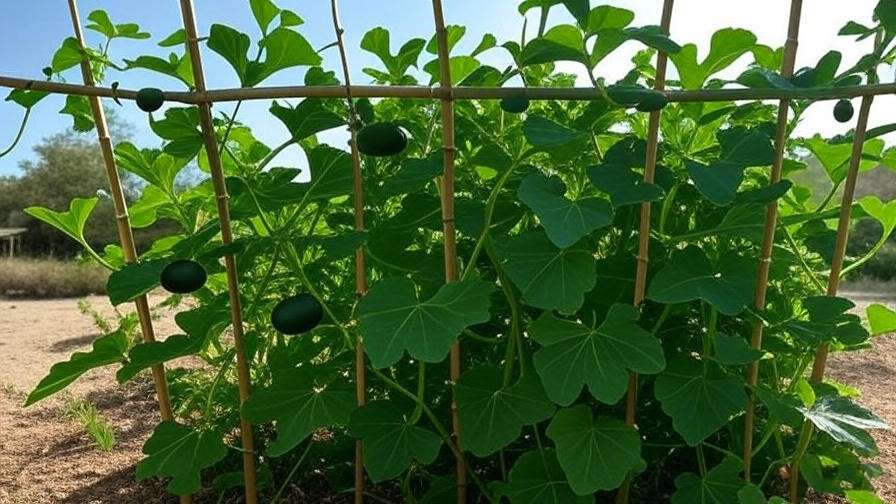
Pest and Disease Management in Laredo
Common Pests in Laredo
Aphids, spider mites, and squash bugs are common in Laredo’s warm climate. Inspect plants weekly for sticky residue (aphids), webbing (spider mites), or brown bugs (squash bugs). Control pests with neem oil or insecticidal soap, available at Laredo’s Tractor Supply Co. Companion planting with marigolds or nasturtiums can deter pests naturally. The Laredo Master Gardeners program offers free pest identification workshops for local gardeners.
Preventing Diseases
Powdery mildew, fusarium wilt, and anthracnose threaten container watermelons. Ensure good air circulation by spacing bins 2-3 feet apart and pruning excess foliage. Apply organic fungicides like copper-based sprays if needed, following label instructions. Rotate crops annually (use new soil in bins) to prevent soil-borne diseases. Texas A&M AgriLife Extension’s Laredo office provides diagnostic services for disease confirmation.
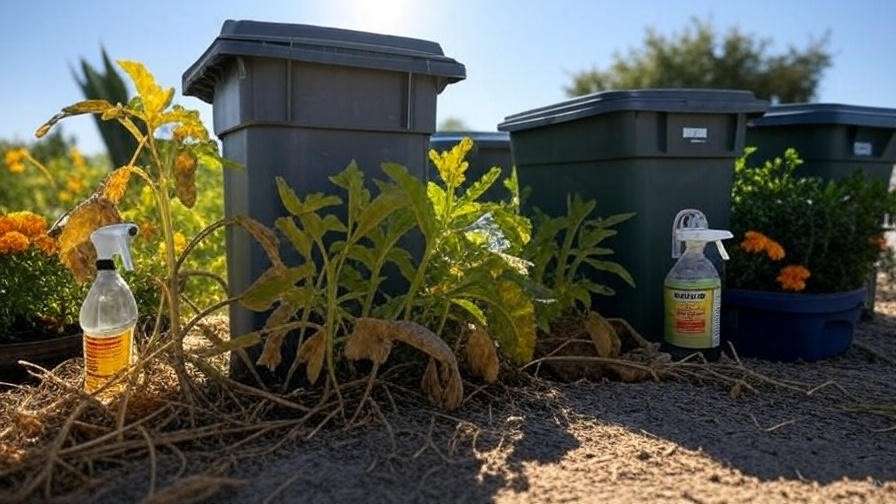
Case Study: Maria Lopez, a Laredo gardener, saved her watermelon bins from aphids by introducing ladybugs and using neem oil, harvesting 10 pounds of ‘Sugar Baby’ melons in her first season.
Harvesting and Enjoying Your Watermelons
When to Harvest
Timing is critical for harvesting sweet, juicy watermelons from your bins in Laredo. Look for these signs of ripeness: a yellow or cream-colored spot on the fruit’s underside (the “belly”), a dull rind that doesn’t shine, and a dry, brown tendril near the fruit’s stem. Most container-friendly varieties, like ‘Sugar Baby’ or ‘Golden Midget’, take 70-90 days to mature, depending on planting time and weather. To harvest, use clean, sharp pruning shears to cut the stem about 2 inches above the fruit, avoiding damage to the vine. In Laredo’s climate, early morning harvesting helps preserve freshness before the day’s heat sets in.
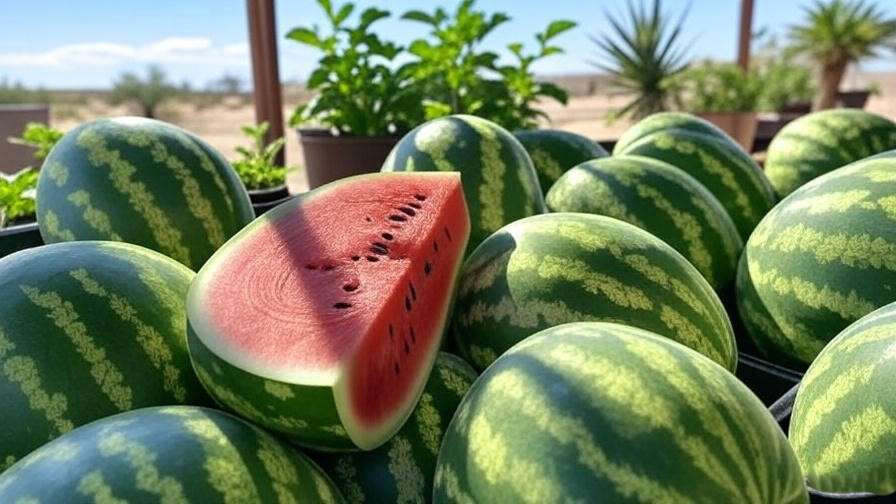
Storing and Using Your Harvest
Once harvested, watermelons can be stored in a cool, shaded area, such as a garage or pantry, for up to 2-3 weeks. Avoid refrigerating whole melons for too long, as this can reduce flavor. For Laredo’s warm climate, try these refreshing uses:
- Watermelon Salad: Combine cubed watermelon with feta cheese, mint, and a lime vinaigrette for a zesty, summer-friendly dish.
- Smoothie: Blend watermelon with ice, yogurt, and a touch of honey for a hydrating drink.
- Salsa: Mix diced watermelon with jalapeños, cilantro, and red onion for a Laredo-inspired twist.
For heirloom varieties, save seeds for next season by rinsing and air-drying them thoroughly. Store in a cool, dry place, like a sealed container in your pantry. Local gardening groups, such as the Laredo Master Gardeners, often host seed-swapping events to share heirloom varieties.
Recipe: Laredo Watermelon Salsa
- Ingredients: 2 cups diced watermelon, 1 jalapeño (seeded, minced), ¼ cup chopped cilantro, ½ red onion (diced), juice of 1 lime, salt to taste.
- Instructions: Mix all ingredients in a bowl, chill for 30 minutes, and serve with tortilla chips. Perfect for Laredo barbecues!
Troubleshooting Common Issues with Watermelon Bins
Growing watermelons in bins in Laredo can come with challenges, but most issues are manageable with the right approach. Here are common problems and solutions:
- Poor Fruit Set: If flowers drop without forming fruit, pollination may be lacking. Hand-pollinate by transferring pollen from male to female flowers using a small brush. Laredo’s heat can reduce pollinator activity, so this step is often necessary.
- Small Fruits: This can result from nutrient deficiencies or overcrowding. Ensure you’re fertilizing with a phosphorus-rich formula during fruiting and limit each bin to one plant.
- Yellowing Leaves: Often caused by overwatering, underwatering, or nutrient imbalance. Check soil moisture and adjust watering, and test soil for nutrient levels using kits from Laredo’s Tractor Supply Co.
- Heat Stress: Laredo’s intense summers can wilt plants. Provide partial shade with a cloth during peak heat (1-4 PM) and mulch the soil surface with straw to retain moisture.
For persistent issues, contact the Laredo Master Gardeners or Texas A&M AgriLife Extension’s local office for tailored advice. Their workshops and diagnostic services are invaluable for troubleshooting.
FAQs About Growing Watermelons in Bins in Laredo
Can I grow watermelons in bins year-round in Laredo?
Laredo’s mild winters allow a second planting in late summer (August-September) for a fall harvest, but spring (March-April) is ideal to avoid extreme heat. Protect bins from rare cold snaps with frost blankets.
What’s the best bin size for a beginner?
Start with a 15-20 gallon bin to ensure enough space for roots. Smaller bins restrict growth, while larger ones (25+ gallons) are harder to manage for novices.
How do I protect my watermelon bins from Laredo’s summer heat?
Use partial shade cloths during peak heat, water consistently, and mulch with straw or bark to keep soil cool. Move bins to shaded areas if temperatures exceed 100°F.
Are there watermelon varieties that thrive better in Laredo’s climate?
Compact, heat-tolerant varieties like ‘Sugar Baby’ and ‘Bush Charleston Gray’ perform best. Avoid large-fruited types like ‘Jubilee’, which struggle in bins.
How much water do watermelon bins need in Laredo’s dry season?
Water deeply (1-2 gallons per bin) once or twice weekly, adjusting for heatwaves. Ensure soil dries slightly between waterings to prevent root rot.
Conclusion
Growing watermelon bins in Laredo is a rewarding way to enjoy fresh, homegrown fruit while overcoming the challenges of limited space and tough soil. By choosing the right varieties, setting up bins with care, and following expert tips on watering, fertilizing, and pest control, you can harvest juicy watermelons tailored to Laredo’s hot, semi-arid climate. This guide, informed by local horticulturists and South Texas gardening experience, equips you with everything you need to succeed. Start your watermelon bins today, and share your progress with Laredo’s vibrant gardening community! For more tips, explore our articles on container gardening or join a local Master Gardeners workshop.

